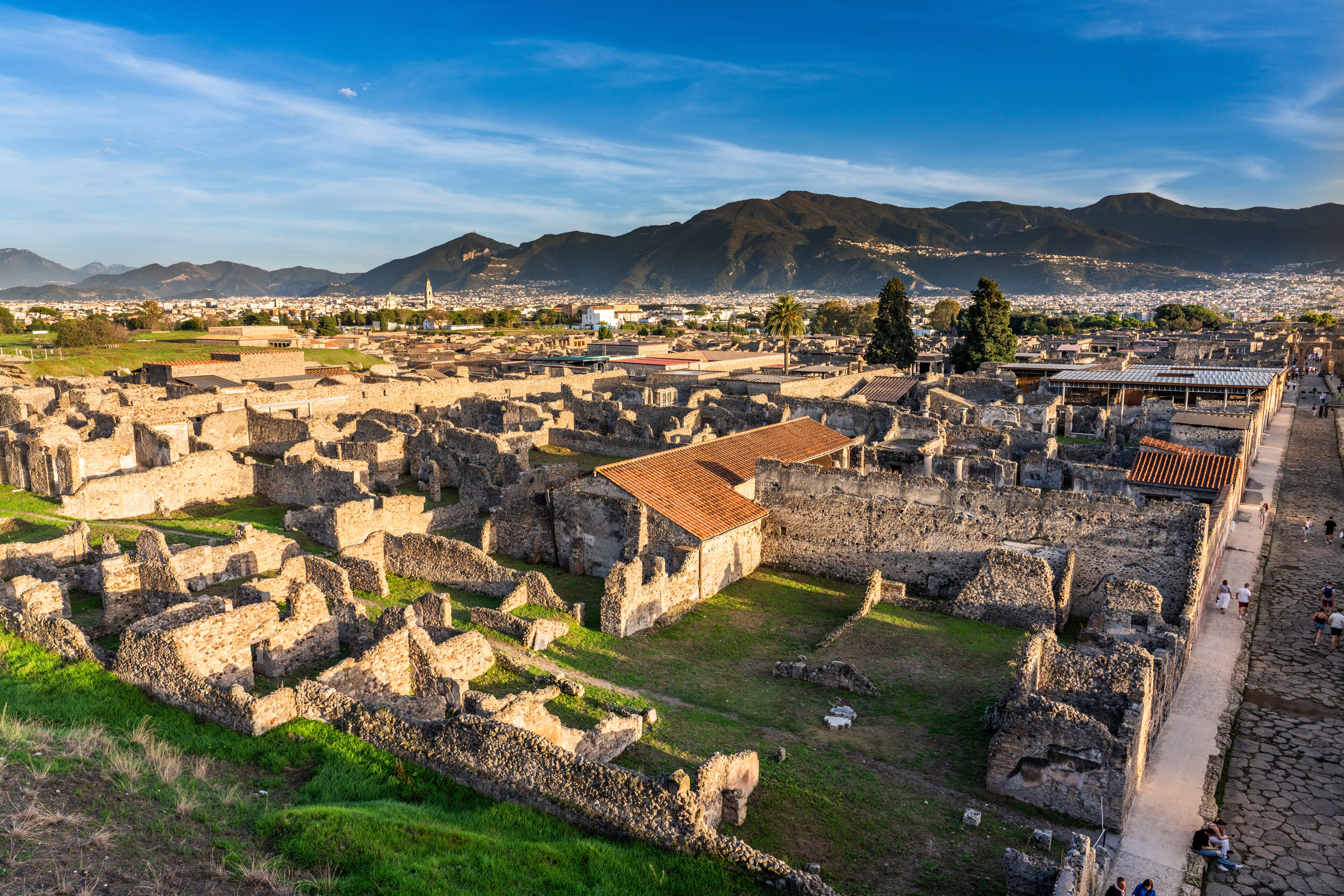Things to see in Herculaneum

-
The Palaestra: A sports complex open through a grand entrance, busy with activity.
-
Central Thermae: A Public Bath
-
The College of the Priests of Augustus
-
Villa of the Papyri: A lavish home outside the city walls, containing over 1,800 scrolls with Greek philosophy texts.
-
Wax Tablets
-
House of Neptune: Known for its stunning mosaics.
-
House of the Deer: A lavish house with elegant decorations.
-
House of the Skeleton: Named for the skeletons found within.
-
House of the Wooden Partition: Famous for its preserved wooden partition
-
House of Relief of Telephus: Notable for its intricate relief sculptures
-
Samnite House: One of the oldest houses in the town, showcasing early Roman architecture.
Interesting Facts about Herculaneum

Unique Find- Ancient Roman Boat
In Herculaneum, archaeologists found an old Roman boat called the "Hercules." It's the only one left from ancient Rome. This find tells us about how Romans traveled and traded goods long ago.
Small Town, Big Riches
Herculaneum was smaller than Pompeii but richer. About 5,000 people lived there, mainly wealthy Romans. They had fancy houses with colorful marble walls, showing off their high status.
Unique Treasures
Herculaneum offers interesting places to visit. These include thermal baths, gyms, and impressive homes like the House with the Mosaic Atrium and the House of Neptune. The most luxurious home is the Villa of the Papyri, which once belonged to rich Romans.
Mystery Origins
No one knows exactly where Herculaneum came from. It might have started as a Greek settlement near Naples. Over time, it switched to Latin, the language of the Romans. This change shows how cultures mixed in ancient times.
The Famous Villa of the Papyri- Home of an Ancient Library
Explore the Villa of the Papyri, unearthed by Karl Weber. This ancient Roman home held a remarkable discovery: over 1,800 scrolls, the only surviving library from that ancient Greco-Roman world. You can spot statues from the Villa of the Papyri on display in museums around the world!
Preserved Domus Houses
Explore the two-floor houses of Herculaneum! These Domus houses show well-preserved inside structures, with wooden and marble elements, decorations, jewelry, and even organic remains like food.
Advanced Infrastructure
Herculaneum had an advanced system for sewage and a well-organized network for water distribution, demonstrating its expertise in city planning and engineering.
Frequently Asked Questions

Q What is Herculaneum and where is it located?
Herculaneum was an old Roman town near Mount Vesuvius, close to today's town of Ercolano in Campania, Italy. It was a rich seaside town before it was buried under volcanic ash and pumice when Vesuvius erupted in AD 79. Herculaneum, like Pompeii, gives us a clear view of Roman life and buildings.
Q: How was Herculaneum preserved so well?
Herculaneum was buried by ash and mud from Mount Vesuvius in 79 AD. This ash acted like a giant blanket, hiding and protecting everything underneath. Buildings, furniture, and even food stayed safe from rotting for hundreds of years until they were excavated by archaeologists.
Q: Can you visit the preserved buildings in Herculaneum?
Yes, visitors to Herculaneum can explore the remarkably preserved buildings. These include houses, shops, and public baths, offering a unique insight into the daily life of its ancient inhabitants.
Q: How long does it take to visit Herculaneum?
It usually takes about 2 to 3 hours to visit Herculaneum. This gives you enough time to explore the well-preserved buildings, streets, and artifacts, and to appreciate the ancient town's unique history and architecture.
Q: Is Herculaneum accessible for people with mobility issues?
Herculaneum has some parts that might be hard for people who have trouble moving because of uneven surfaces and stairs. But some paths and facilities are easy to use and make the visit easier for everyone.
Q: Are there guided tours available at Herculaneum?
Yes, guided tours are available at Herculaneum. These tours tell you amazing facts about the place, making your trip more fun and interesting. You can book tours in advance or on-site.
Q: What makes Herculaneum different from Pompeii?
Both Pompeii and Herculaneum were buried by Mount Vesuvius in 79 AD. Herculaneum stands out in a few ways. The ash that covered it preserved wooden buildings, furniture, and food better than in Pompeii. Herculaneum was smaller but richer, with fancier houses and better infrastructure than Pompeii.